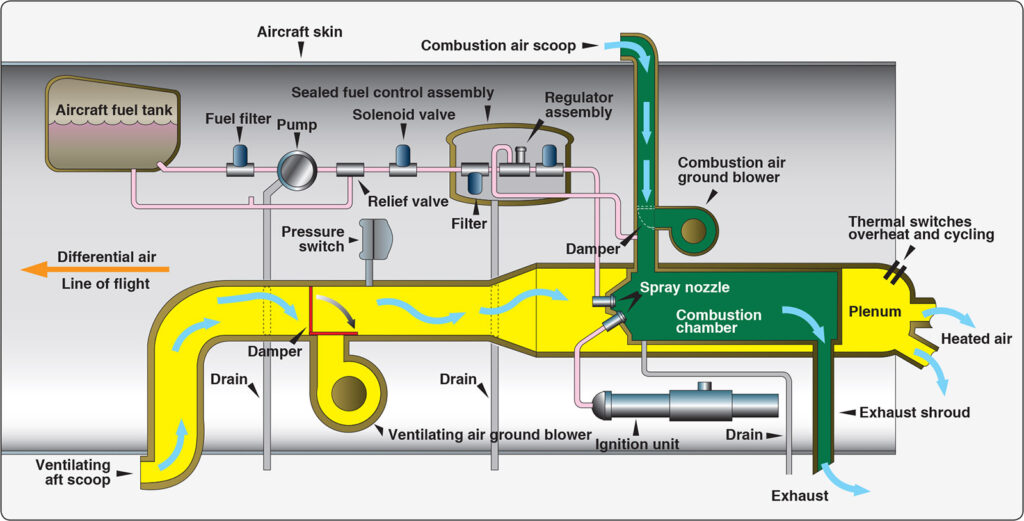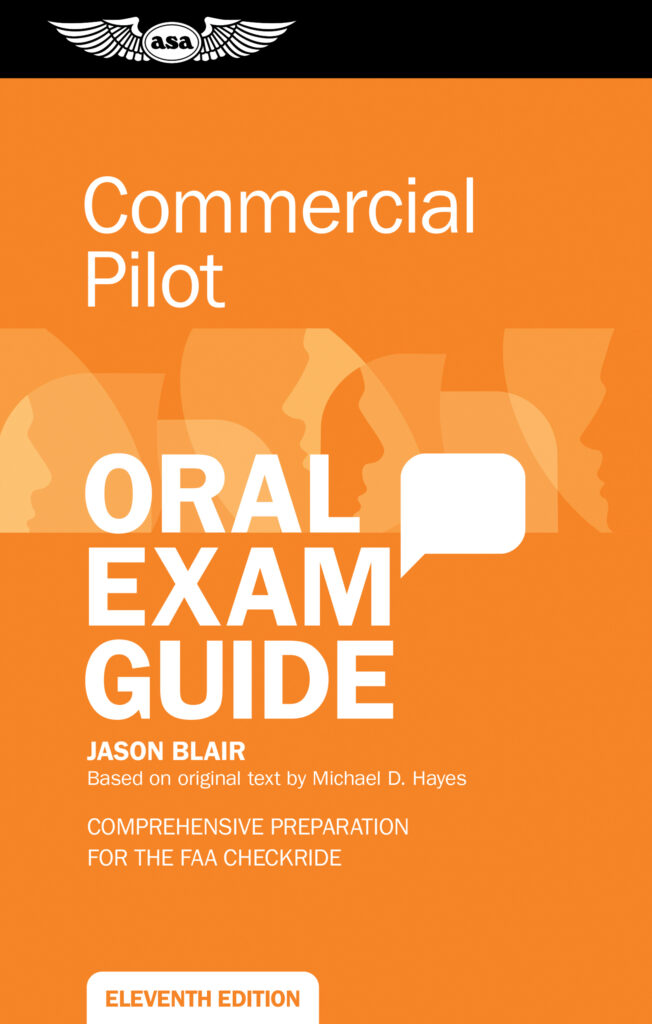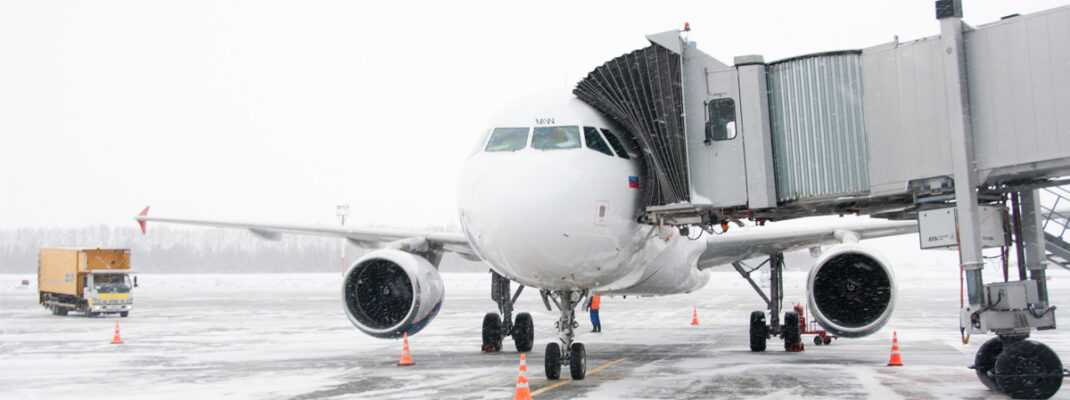The past few weeks have seen extraordinary weather events in all parts of the United States. Unusually cold temperatures have brought everything from ice storms to blizzards, even in places that don’t usually expect white winters. Pilots must keep the weather in mind when preparing for any flight. You can accomplish this by obtaining an in-depth preflight weather briefing and properly pre-flighting your aircraft for cold weather operations.
A proper understanding of weather and how it will affect both your intended flight and aircraft are a huge part of the aeronautical knowledge required to earn a pilot’s certificate. As you progress through your certificate levels and ratings as a pilot you will continually build upon the knowledge required to operate under that certificate level. ASA’s oral exam guides are here to help and include questions and answers written by examiners to allow you to simulate the experience of the oral exam. Today we’ve got some sample questions from our Commercial Pilot Oral Exam Guide related to cold weather.
First, from airplane systems section L on environmental systems, we have questions related to heaters and the problems that can be associated with them:
1. What are the two main types of heater systems commonly found on general aviation aircraft? (FAA-H-8083-25)
Fresh air heaters—Fresh air heaters that pass air over an exhaust shroud into the cabin through ducts are a type of combustion heater commonly used in general aviation aircraft. As the fresh air flows over the hot exhaust shroud, it absorbs the heat from the engine exhaust, significantly increasing its temperature. The heated air is then distributed into the aircraft cabin through a network of ducts. These ducts are strategically placed to ensure proper circulation of warm air throughout the cabin.
Combustion heaters—Combustion heaters, also known as fuel-burning heaters, utilize a combustion process to generate heat. These heaters typically burn aviation fuel, such as Jet-A or avgas, to produce heat that is then distributed throughout the aircraft cabin. Combustion heaters are often equipped with a heat exchanger, which transfers the heat from the combustion chamber to the cabin air. Air circulation fans help distribute the heated air throughout the cabin, providing warmth to occupants. Combustion heaters are commonly found in many piston-engine aircraft and smaller turboprop aircraft.
2. What are the main aeromedical risks associated with cabin heater systems in general aviation aircraft? (FAA-H-8083-25)
Cabin heater systems in general aviation aircraft, while providing comfort and warmth, can pose certain aeromedical risks. The main risks associated with cabin heater systems include:
Carbon monoxide (CO) poisoning—CO is a colorless and odorless gas produced by incomplete combustion of fuels, such as aviation fuel or other hydrocarbons used in the heater system. If there is a leak or malfunction in the heater system, CO can enter the aircraft cabin, leading to CO poisoning. Inhaling high levels of CO can cause symptoms ranging from headaches, dizziness, and nausea to more severe consequences, including loss of consciousness or death. A common cause for carbon monoxide in a cabin is cracked tubing or exhaust shrouds that allow the gas into the cabin.
Oxygen depletion—Another risk associated with cabin heaters is the potential for oxygen depletion. Some combustion-based heater systems consume oxygen during the combustion process. In an inadequately ventilated or sealed cabin, excessive use of a combustion heater can lead to a reduction in the available oxygen levels. This can result in hypoxia, which is a condition characterized by an insufficient supply of oxygen to the body’s tissues and organs. Hypoxia can impair cognitive function, decrease alertness, and potentially lead to a loss of consciousness.

Next, learn how to answer questions on keeping your aircraft free from ice with information from section M on deicing and anti-icing:
1. What is the difference between a deice system and an anti-ice system? (FAA-H-8083-31)
A deice system is used to eliminate ice that has already formed. An anti-ice system is used to prevent the formation of ice.
2. What types of systems are used in the prevention and elimination of airframe ice? (FAA-H-8083-31)
Pneumatic—A deice type of system; consists of inflatable boots attached to the leading edges of the wings and tail surfaces. Compressed air from the pressure side of the engine vacuum pump is cycled through ducts or tubes in the boots causing the boots to inflate. Most systems also incorporate a timer.
Hot air—An anti-ice type system; commonly found on turboprop and turbojet aircraft. Hot air is directed from the engine (compressor) to the leading edges of the wings.
Electrical—Electrical deicing systems in general aviation aircraft use embedded heating elements or wires on critical surfaces like wings, tailplanes, and propellers. Activating the system sends an electrical current through the elements, generating heat to prevent or remove ice buildup. Temperature sensors monitor surface temperatures for optimal deicing. Power is supplied through the aircraft’s electrical system or dedicated sources such as batteries.
Fluid—Liquid deicing systems are used in general aviation aircraft to remove ice and prevent its formation. A liquid deicing system typically involves spraying a specialized deicing fluid onto critical surfaces such as wings, tailplanes, and propellers. This fluid contains anti-icing agents that prevent ice buildup and facilitate ice removal. The deicing fluid is stored in dedicated tanks and distributed through a network of tubing and nozzles. Pilots activate the system to spray the fluid onto the surfaces before or during flight. The fluid coats the surfaces and is intended to provide a protective layer to prevent further ice formation or accumulation.
3. What types of systems are used in the prevention and elimination of propeller ice? (FAA-H-8083-31)
Electrically heated boots—Consist of heating elements incorporated into the boots which are bonded to the propeller. The ice buildup on the propeller is heated from below and then thrown off by centrifugal force.
Fluid system—Consists of an electrically driven pump which, when activated, supplies a fluid, such as alcohol, to a device in the propeller spinner which distributes the fluid along the propeller assisted by centrifugal force.
4. What types of systems are used in the prevention and elimination of windshield ice? (FAA-H-8083-31)
Fluid system—A liquid fluid system, typically driven by an electric pump, can be activated to spray deicing fluid onto the windshield (or other surfaces) of the aircraft to prevent formation of ice. A best practice is to deploy this fluid before ice accumulates and begins to coat surfaces. It is intended to be most effective at stopping ice from bonding to surfaces, not removing it once it has built up.
Electrical system—Heating elements are embedded in the windshield or in a device attached to the windshield which when activated, prevents the formation of ice.
These questions refer to FAA-H-8083-25, the Pilot’s Handbook of Aeronautical Knowledge, and FAA-H-8083-31, the Aviation Maintenance Technician Handbook—Airframe. You can find this information and more in the eleventh edition of Commercial Pilot Oral Exam Guide.

Featured image by 2happy at stockvault.net.





